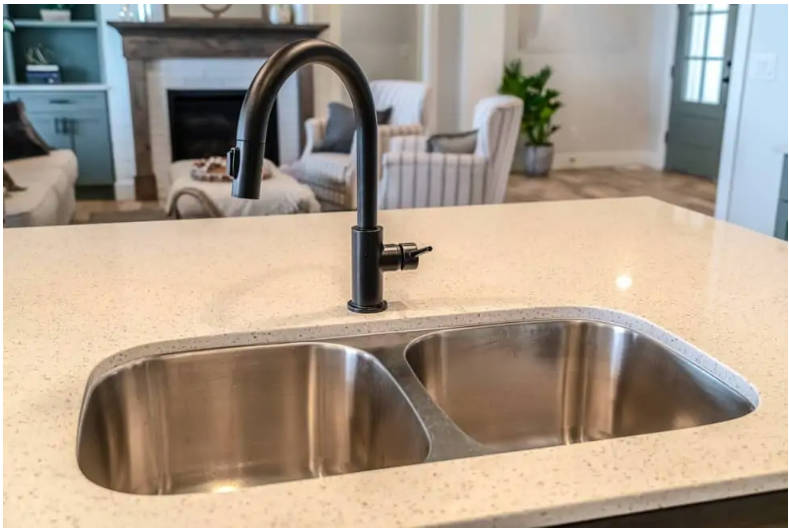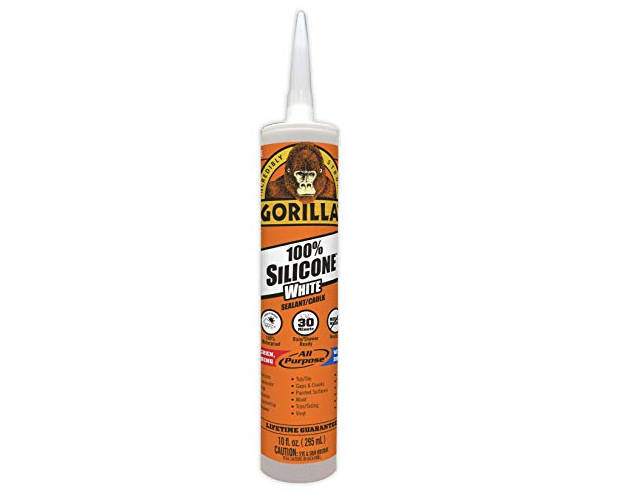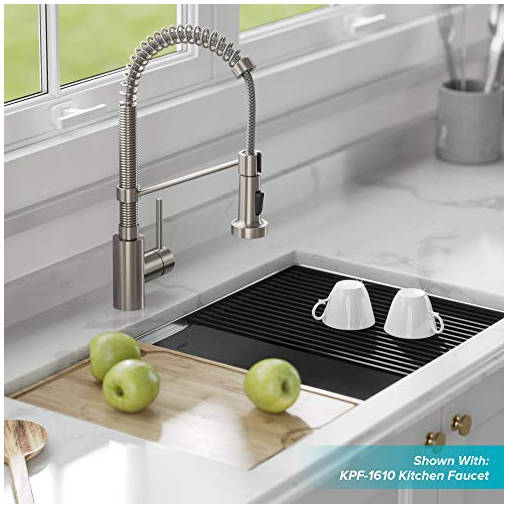
Undercounter sinks are the perfect solution to provide a seamless, integrated look to your kitchen or bathroom. While they are a great choice, they must be installed correctly. Unfortunately, sometimes you do a good job during installation but the sink still fails after a while.
Why is my sink leaking and how to fix it? If you are confused about this problem, we can help you. So, before you call in the professionals, read this guide to see if the culprit of your leaking under the countersink is a simple, workable solution.
Why Is My Sink Leaking?
Whether you installed your sink yourself or had a professional install it, leaks are nothing new with this type of sink. Whether you have a kitchen or bathroom sink, the culprit for why is my sink leaking is usually one of three reasons for why is my sink leaking.
Dust On The Countertop
The first problem can fall on the cleanliness of the bottom of the countertop at the time of installation. It is important that the bottom of the countertop, where it comes into contact with the sink, is completely clean.
If this is not the case, the sink may not have adhered sufficiently, causing it to succumb to gravity after a few days or even weeks.
You will need to clean the surface with denatured alcohol and then caulk it thoroughly. If you are using granite or solid surface countertop, you need to be especially careful. Any dust on the countertop will affect the caulk and result in a poor seal.
Installation Problems
Another problem for why is my sink leaking that can occur can fall into the category of installation problems. In some cases, the clips or epoxy you use to secure the sink to the bottom of the countertop are loose. If they are loose enough, gravity will do its work and cause the sink to fall off the countertop.
This will result in a gap between the under-counter sink and the countertop, which will affect the caulking. Holes in the caulking may appear, allowing water to seep in.
Improper Sealant
When installing an under-counter sink you need to use a proper kitchen sealant. If you use a sealant designed for other purposes, you may end up with a leaky sink. This is a bit of a problem when you consider that sinks are supposed to hold water, not spill it all over the place.
Moen, a well-known brand for sinks and various fixtures, recommends using a pure silicone sealant for sink installation projects. Make sure you get a 100% pure silicone sealant, as it is designed for long-lasting flexibility but with great bonding properties.
If you cut corners and use a basic, generic caulk to seal your gutters, there is a good chance that it will fail in no time.
How to Fix A Leaking Sink?
Why is my sink leaking? You can check it by allowing water to seep into the cupboard below, you must go through several steps to fix it. While you can put towels in the cupboard below to absorb the water as it comes down, or even use a bucket to catch the water, you must remember to replace the towels or empty the bucket.
The process can be time-consuming, but it’s worth it in the long run (we don’t want mold growing in the cupboard below).
If The Sink Is Still Safe
If the cupboard under the sink isn’t already empty, empty it. Then, crawl under the sink and check that the sink clips are still securely fastened to the bottom of the countertop. If this is the case, you may be able to make a quick fix with silicone.
Here’s what you’ll need.
- 100% silicone sealant
From the inside of the cabinet, apply silicone sealant to the joints around the edge of the sink. You can also try re-caulking the area to see if it eliminates the leak. Let it dry and then check if the sink is still leaking. If so, go to the next section.
Removing The Sink
Generally, the best solution is to remove the entire sink and reseal it to the worktop. Here’s what you’ll need.
- Squeegee tool
- Denatured alcohol
- Cleaning cloth
- 100% silicone sealant
- Clamps
Start by turning off the water to the sink. Turn on the water line from the tap and drain the waterline. Once the water line has been emptied you can start removing the waterline. why is my sink leaking
Remove the water supply and drainpipe from underneath the sink. Once this has been removed, unhook the under-counter sink from the countertop. Given that the silicone caulk currently holding the sink in place has failed, it should be relatively easy to pull the sink free.
Set the sink aside and scrape off as much caulk as possible from the top flange of the sink. Try to get as much of the caulk off as possible as it may interfere with the seal. Clean the interlocking surfaces (both the sink and the worktop) thoroughly with denatured alcohol and a clean cloth.
Allow the area to dry. After the joint has been cleaned and dried, apply a thin layer of silicone sealant to the top flange of the sink. Once you have applied the glue, you need to act quickly. Reinstall the sink before the silicone sealant has cured. why is my sink leaking
Clamp the sink in place. Using a clean cloth, wipe away any excess sealant that has seeped from the sides of the sink during installation. In most cases, the silicone sealant is fully cured within 24 hours. Check the packaging of the sealant to clarify the specific time frame.
Once the sealant has dried, crawl under the sink and visually inspect for any possible problem areas. If no problems are found, reinstall the plumbing supply and drain under the sink. Turn the water back on and check for leaks.
If you are not comfortable handling the repair process, have a professional repair your leaking sink for you. why is my sink leaking
Frequently Asked Questions (FAQ)
How do I seal an under-counter sink to granite?
Let’s say you have stainless steel under the counter sink that you want to install on a granite countertop. The process is the same as the one we described above for resealing an under-counter sink.
Typically, the installer will apply a thick coat of silicone caulk between the sink and the countertop to hold it in place. Once the sink has been installed, they may apply a second coat of caulk along the edge to prevent moisture penetration.
Silicone sealant will not hold the sink in place, so you will need to take additional measures to secure the sink, either brackets or gorilla glue will do.
Can under-counter sinks fail?
They can usually, it’s a combination of things. For example, suppose you have a quartz or granite worktop, rubbish disposal, and an under-counter sink. The weight of the rubbish disposal’s moisture and vibrations can pull the sink away from the countertop. why is my sink leaking
This allows the sink to leak, thus creating a mess in your sink cabinet. Generally, under-counter sinks can be problematic because they rely on caulking and quality installation to remain sturdy. Over time, gravity can work its magic and potentially cause the sink to pull away from the countertop, creating a gaping hole.
It is vital that the sink remains solid by using the right materials and completing the installation correctly.
 ARCORA FAUCETS
ARCORA FAUCETS


